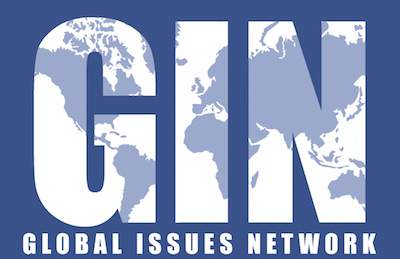Excerpt From: Rischard, Jean-francois.
“High Noon: 20 Global Problems, 20 Years To Solve Them.” iBooks.
“Many places in the world are getting drier—not just because of climate change but also because of the demands of irrigation and industry. Lake Chad has shrunk to one-twentieth of its size in 1960.28 The Aral Sea is about gone. The Colorado River no longer reaches the sea in the dry season. Just 10 percent of the Mesopotamian marshlands are left. Worldwide, some 2–3 billion people could face acute freshwater shortages by 2020, which translates into one person in three, compared with one in ten today. About twenty countries are now water-stressed; by 2020 there will be more than forty. Asia, sub-Saharan Africa, and even the Mediterranean will be the most affected regions. For the developing world as a whole, the shortage could average 15–20 percent, with some already tense spots, like the Middle East, much worse off.
Water scarcity will be caused mainly by increased demand and pollution, and will be aggravated by global warming:
Irrigation, accounting for 70 percent of the world’s demand for water, must increase to meet the 40 percent or so expansion of food supplies needed by 2020. It takes 1,000 times more water to grow food for an individual than to meet that person’s need for drinking water. Yet more than half the water entering irrigation systems never makes it to the crops, due to leaks or wasteful practices. And excess irrigation damages lakes, rivers, and marshes—ecosystems on which many poor people depend for food, fish, and timber. In Russia “and Central Asia, many major inland seas, lakes, and rivers are in terminal decline for mostly that reason.
Pollution is another growing worry. About 97 percent of the world’s freshwater stock lies underground in aquifers, with a residence time that averages 1,400 years, against sixteen for rivers. The world over, these aquifers are being either badly overused (in China, India, the western United States, and many other places) or badly polluted, generally almost irreversibly, through nitrates, pesticides, and other man-made products. In parts of northwestern France, nitrates have about ruined the aquifers. This phenomenon is probably worse than we know because it can remain invisible for a long time: pollution from nineteenth-century textile mills in Massachusetts is just starting to show up in artesian wells in Long Island.
Water deficits are thus building towards a major planetary challenge. With climate change making the problem worse, there is a strong global angle. Control over water could become a frequent cause of international conflict, particularly where there is a history of antagonism and one country has the power to restrict the flow of a crucial river.29 The number of river basins shared by several countries has gone up from 210 or so to 260 in the last twenty years. Water shortages are also tightly connected to poverty and health issues, themselves immense global challenges.30
Here again, there is no dearth of technical and policy solutions to the water deficit issue—solutions that call for determined action at the global level:
Technologies like drip irrigation, precision sprinklers, low-cost high-efficiency irrigation systems, drought-resistant varieties, and new rice irrigation systems can make an enormous difference and should become the target of urgent global technology-sharing efforts. The same applies to desalination, which is still expensive but could leap forward with the discovery of more efficient membranes and processes to remove the salt from seawater.
Another key to improved water management has to lie in setting prices that better reflect the cost of supplying and distributing it. The World Resources Institute, the World Conservation Union (IUCN), and others strongly believe that the major cause of water scarcity and damage to freshwater ecosystems is the undervaluation of water the world over. Proper pricing may include, as in Ecuador, the cost of protecting the cloud forest from which the water springs. Some people argue that in many cases, it would help to allocate water rights and make them tradable.
Better water management also includes helping many countries and regions with advanced techniques: modernizing irrigation systems, more systematic management of water basins, interbasin conveyance systems, and regional initiatives around shared waters—such as between the ten countries that make up the Nile Basin and whose 250 million population will grow to more than 400 million by 2020.31
Water safety and sanitation require a major effort as well: today, 1 billion people lack access to safe water, and 2 billion lack sanitation. Both are directly linked to poverty and disease.32
All in all, water infrastructure “and management investments in the developing countries must more than double from the current $75 billion per year level,33 requiring massive aid as governments are budget strapped and as the private sector will only finance a small share (see Chapter 13).
Water deficits are maybe a decade away from becoming a particularly ugly and dangerous global issue. There have been some useful international efforts so far, but they have focused mostly on awareness raising and have produced little beyond calls for action. The time has come to go beyond that. The world badly needs vigorous global action, in part to make sure the technology and policy challenges are addressed more determinedly across the globe, and in part to help overcome the local opposition that some of the most-needed changes (such as pricing and allocation of water rights) will undoubtedly trigger.
